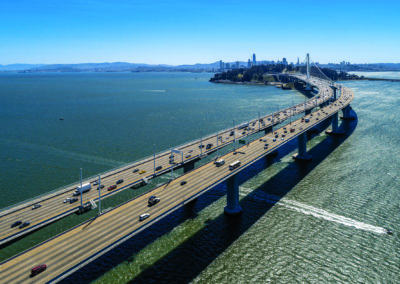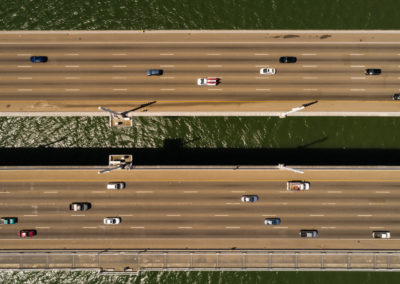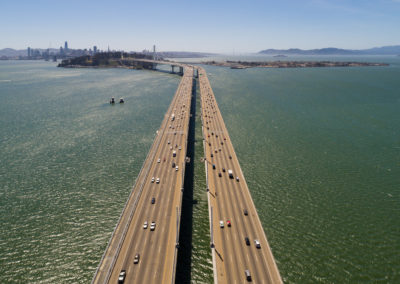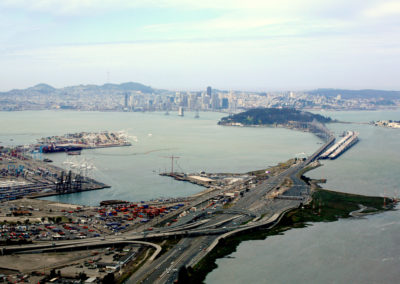Location:
San Francisco, CA
Owner:
California Department of Transportation
Project Completion:
2007
Project Details
In 1989, the Loma Prieta earthquake shook the San Francisco Bay Area and caused the upper section of the Eastern Span of the San Francisco Oakland Bay Bridge (SFOBB) to collapse. After this catastrophic event, the decision was made to replace the Eastern Span. The new “Skyway” portion of the SFOBB was constructed as a precast prestressed segmental box girder, twin structures approximately 1.2 miles long. The new bridges include 200 million pounds of structural steel and 120 million pounds of reinforcing steel in the precast superstructure segments alone.
FACT:
300,000
Average Daily Traffic
Project Background
Because of the design of this structure, the deck needed to be protected as it is a critical element of the structure that must not be compromised by cracking, or moisture and chloride intrusion—not only into the deck itself but also the adjoining stem walls and soffitt of the box girder. In addition, the riding surface would have to be overlaid to achieve a smooth profile and the orthotropic steel pedestrian path would need protection—in total, over 1.1 million square feet.
The Solution
Caltrans had used polyester concrete overlays since the early 1980s to rehabilitate old bridge decks, but had more recently used the material on newly constructed decks in the Sierra Nevada Mountains where bridges have a short life due to the heavy chain traffic and salt used for ice control. While there was comfort using the material on the new structure, even more innovative was the use of polyester concrete on a steel substrate. Though contractors routinely paved over steel armor joints with a successful track record, it was the first time it had been specified in this magnitude. The decision was made to overlay the Skyway segment, both the twin structures and orthotropic steel pedestrian panels, with PPC 1121. The proven performance history, extremely low permeability for the marine environment, abrasive resistance in this high traffic area and ability to bond to steel were all major advantages offered by no other systems. As the bridge was not yet opened to traffic, and the 2 hour traffic return offered by the product was not necessary, the construction of the overlay was even more simple than usual.
Lasting Success
Before construction of the Skyway began in 2002, the first overlays in the state had been down approximately 20 years. The design life used for calculating life cycle costs for polyester concrete overlays has since become 30 years as time passes and the age of the first overlays still performing increases, further extending the value of the product. The San Francisco Oakland Bay Bridge Eastern Skyway span is a critical bridge that is a signature of the CalTRANS system.
It is imperative that the overlay be able to completely seal out moisture and chloride intrusion while standing up to the constant abuse that comes from carrying approximately 300,000 vehicles per day. After 30 years of success with PPC, CalTRANS officials are confident that there is only one option that meets all of this structures needs. Kwik Bond Polymers’ PPC 1121 is in a class of it’s own, protecting the structures of the future, today.



